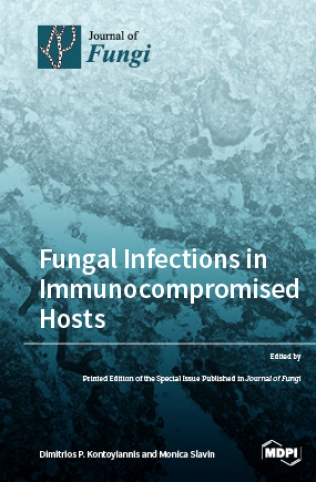Effect of Plasma-Activated Water on the Cellulase-Producing Strain Aspergillus niger A32
IF 4.2
2区 生物学
Q2 MICROBIOLOGY
引用次数: 0
Abstract
To investigate the effect and mechanism of plasma-activated water (PAW) on Aspergillus niger, PAW was prepared using a needle array–plate dielectric barrier discharge plasma system. The concentrations of long-lived reactive oxygen and nitrogen species (RONS), namely, H2O2, NO2−, and NO3−, in the PAW were 48.76 mg/L, 0.046 mg/L, and 172.36 mg/L, respectively. Chemically activated water (CAW) with the same concentration of long-lived RONS was also prepared for comparison. A. niger A32 was treated with PAW and CAW. After treatment, the treated strains were observed and analyzed with scanning electron microscopy (SEM) and transmission electron microscopy (TEM) to screen probable mutants. The results indicated that the pH, conductivity, and ORP values of PAW were 2.42, 1935 μS/cm, and 517.07 mV, respectively. In contrast, the pH and ORP values of CAW were 6.15 and 301.73 mV, respectively, which differed significantly from those of PAW. In addition, the conductivity of CAW showed no change. SEM and TEM analyses revealed that A. niger A32 treated with CAW exhibited less damage compared with the control. In contrast, A. niger A32 treated with PAW showed significant shrinkage, deformation, and exudate attachment over time. Following PAW treatment, after four passages, a high cellulase-producing stable mutant strain A-WW5 was screened, exhibiting a filter paper enzyme activity of 29.66 U/mL, a cellulose endonuclease activity of 13.79 U/mL, and a β-glucosidase activity of 27.13 U/mL. These values were found to be 33%, 38%, and 2.1% higher than those of the original fungus sample, respectively. In total, 116 SNPs and 61 InDels were present in the genome of the mutant strain A-WW5. The above findings indicate that the impact of PAW on A. niger is not only attributed to long-lasting H2O2, NO2−, and NO3− particles but also to other short-lived active particles; PAW is expected to become a new microbial breeding mutagen.等离子活化水对产纤维素酶菌株黑曲霉 A32 的影响
为了研究等离子体活化水(PAW)对黑曲霉的影响和机理,使用针阵列板介质阻挡放电等离子体系统制备了等离子体活化水。PAW 中长寿命活性氧和氮物种(RONS),即 H2O2、NO2- 和 NO3-的浓度分别为 48.76 mg/L、0.046 mg/L 和 172.36 mg/L。为进行比较,还制备了具有相同长效 RONS 浓度的化学活化水(CAW)。用 PAW 和 CAW 处理 A. niger A32。处理后,用扫描电子显微镜(SEM)和透射电子显微镜(TEM)对处理后的菌株进行观察和分析,以筛选可能的突变体。结果表明,PAW 的 pH 值、电导率和 ORP 值分别为 2.42、1935 μS/cm 和 517.07 mV。相比之下,CAW 的 pH 值和 ORP 值分别为 6.15 和 301.73 mV,与 PAW 有显著差异。此外,CAW 的电导率没有变化。SEM 和 TEM 分析表明,与对照组相比,用 CAW 处理的 A. niger A32 的损伤较小。相反,用 PAW 处理的 A. niger A32 随着时间的推移出现了明显的收缩、变形和渗出物附着。经 PAW 处理后,经过四次传代,筛选出一株高产纤维素酶的稳定突变株 A-WW5,其滤纸酶活性为 29.66 U/mL,纤维素内切酶活性为 13.79 U/mL,β-葡萄糖苷酶活性为 27.13 U/mL。这些数值分别比原始真菌样品高出 33%、38% 和 2.1%。突变菌株 A-WW5 的基因组中共存在 116 个 SNPs 和 61 个 InDels。上述研究结果表明,PAW 对黑僵菌的影响不仅来自于持久的 H2O2、NO2- 和 NO3-微粒,还来自于其他短效活性微粒;PAW有望成为一种新的微生物育种诱变剂。
本文章由计算机程序翻译,如有差异,请以英文原文为准。
求助全文
约1分钟内获得全文
求助全文
来源期刊

Journal of Fungi
Medicine-Microbiology (medical)
CiteScore
6.70
自引率
14.90%
发文量
1151
审稿时长
11 weeks
期刊介绍:
Journal of Fungi (ISSN 2309-608X) is an international, peer-reviewed scientific open access journal that provides an advanced forum for studies related to pathogenic fungi, fungal biology, and all other aspects of fungal research. The journal publishes reviews, regular research papers, and communications in quarterly issues. Our aim is to encourage scientists to publish their experimental and theoretical results in as much detail as possible. Therefore, there is no restriction on paper length. Full experimental details must be provided so that the results can be reproduced.
 求助内容:
求助内容: 应助结果提醒方式:
应助结果提醒方式:


